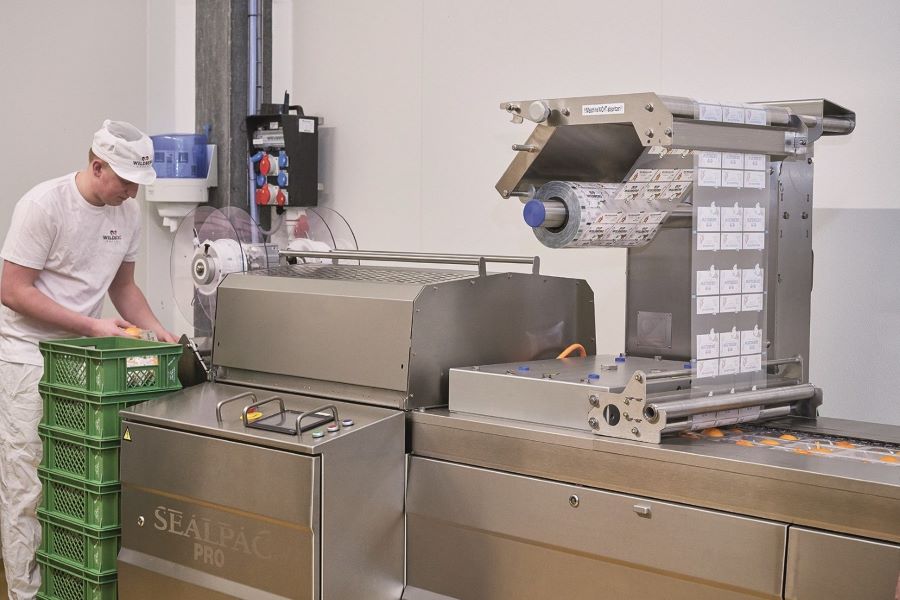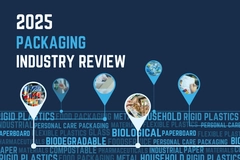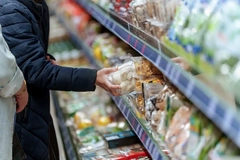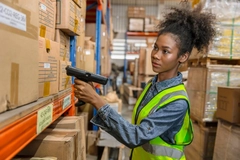Dairy packaging development: Aseptic, shelf life extension and machinery upgrades in a booming market

Dairy packaging systems and technology are under increasing development as companies seek to lower their emissions footprints while maintaining high levels of hygiene, product freshness and overall shelf life.
We look at the latest dairy product developments from Sealpac, machinery insights from SIG, and market analysis from Neil Farmer.
Marcel Veenstra, marketing and communications manager at Sealpac, explains that competition is made even higher in the EU, which has the world’s largest annual consumption of cheese. “In this market, cheese manufacturers are competing for the hand of the consumer with their own specialty products,” he says.
“Regardless of whether it concerns a small craft company with a regional customer base or a large-scale cheese producer for export markets: to ensure the quality of cheese specialties on their way to the end user, and to offer such products in an attractive and eye-catching manner to stand out from the competition, suitable and innovative packaging is required.”
“The solutions here are just as diverse as the product offerings on the shelves of any dairy section at retail.”
Selecting applications
Veenstra explains Sealpac generally aims to combine maximum shelf life with minimum use of plastics in its products. “Depending on the application, we may choose flexible film vacuum packaging on a thermoformer, but we can also apply Modified Atmosphere Packaging (MAP) for cheese snacks in trays.”
“A relatively new solution is FlatSkin, which was selected by our Portuguese customer Queijos Santiago. At this company, a selection of traditional, regional cheese products is carefully placed on a cardboard carrier and reliably sealed by a Sealpac traysealer using the vacuum skin process,” he explains.
“Our customer especially liked the sustainable impact of the new packaging, where, due to the tight skin film, it even seems as if there is no plastic around the product at all.”
“Trendy packs attract the consumers’ attention at retail. It is hard to name one particular design as the most popular, but based on some recent product launches for goat cheese and butter, we have to mention the EasyLid concept.”
 Demand for aseptic packaging for alternative dairy products is rising. This solution combines a patented, injection-molded PP tray produced by Naber Plastics in the Netherlands with a unique tray-sealing technology from Sealpac. The tray has a common sealing edge and an additional ring.
Demand for aseptic packaging for alternative dairy products is rising. This solution combines a patented, injection-molded PP tray produced by Naber Plastics in the Netherlands with a unique tray-sealing technology from Sealpac. The tray has a common sealing edge and an additional ring.
A peelable seal is applied to the regular sealing edge, whereas the additional ring is hermetically sealed in the same process. As such, upon opening the tray for the first time, the lid functionality is automatically activated. It means that the additional snap-on lid, common for this type of packaging, is no longer required.
Also, there is no need to invest in a lidding system that requires extra space and more personnel in the factory. The EasyLid trays are made of 100% PP, making them fully recyclable after use.
Aseptic applications
Julia Trebels, global category and consumer insight manager at SIG, tells Packaging Insights that aseptic applications offer several advantages for maintaining a product’s quality, safety and shelf life. They are designed to maintain the high quality of beverages for an extended period of time without the need for refrigeration or preservatives.
“For example, SIG’s bag-in-box, aseptic carton and spouted pouch solutions keep dairy products safe and of high quality from fill through end consumption. Aseptic technology combined with aseptic packaging solutions extend the shelf life of dairy products for months without the need for refrigeration,” she explains.
“Let’s look at our aseptic carton packs. They help customers deliver the highest food safety, quality and technical performance for their dairy products. Customers can choose from innovative packaging structures delivering even more value and convenience with environmental advantages to consumers.”
Dairy manufacturers can also flexibly select or switch between filling volumes to be able to react to changing market circumstances.
“Future-proofing”
Veenstra says that Sealpac has a “future-proofing ideology” to provide its customers with equipment that allows them to switch to new packaging concepts on the same base machine with minimum downtime. For example, its customer Wildberg Käserei AG in Switzerland uses Sealpac’s Pro Thermoformer, which offers “maximum flexibility and performance” on a small footprint.
“The basic Pro machine is suitable to run flexible and rigid film, both for vacuum packaging and sealing only applications. Depending on the customer’s wishes, various modules can be added to run other packaging solutions, such as MAP, skin or shrink packaging,” he explains.
“The Pro thermoformer is equipped with an innovative tooling quick exchange system from the side, which reduces changeover times. This is perfect for the Swiss artisan cheese factory, which now produces two or three different formats every day in quick rotation on their machine.”
Machinery advancements
 Sealpac EasyLid packaging.Trebels also highlights that developments in machinery technology are helping advance the dairy packaging space.
Sealpac EasyLid packaging.Trebels also highlights that developments in machinery technology are helping advance the dairy packaging space.
“Looking at our latest developments, there are certainly some special filling machine highlights to be mentioned, such as, for example, SIG DomeMini 12 Aseptic to aseptically filled products in SIG DomeMini, our unique on-the-go carton bottle combining convenience with sustainability,” she says.
“Another innovation we recently launched is our new aseptic spouted pouch filling system SIG Prime 55 In-Line Aseptic. This innovative filling equipment for pre-made spouted pouches features in-line pouch sterilization, removing the need for third-party pre-sterilization of spouted pouches. The resulting system reduces supply chain complexity and improves the overall costs to produce aseptically packaged products in spouted pouches.”
“With our filling technology and our packaging solutions in the beverage sector, it basically doesn’t matter what type of beverage is to be aseptically filled. Our wide-ranging portfolio is developed in such a way that every customer — and thus, of course, in the dairy segment — will find a suitable, state-of-the-art, efficient and flexible solution that matches their portfolio and growth targets.”
Market expansion
Market analyst Neil Farmer estimates the global dairy packaging market will grow at a rate of 4% per annum over the period 2024 to 2029.
“Sustainable and environmentally friendly solutions will increase their share of the market. Greater efforts to avoid dairy waste, the increased use of recycled materials and the recycling of substrates will drive growth,” he says.
“The important communication of sustainability of packaging, often found in brand messages on the pack. will grow. This is because consumer expectations surrounding the whole issue of sustainability have been raised to a higher level than ever before.”
Veenstra also notes that companies should be able to benefit from the growing demand for low-meat and vegetarian diets — but only if they present their products appetizingly in safe and convenient packaging.
“There is also the continuous demand for more sustainable packaging, partly driven by legislation, but mostly by the retailers that have set ambitious goals for themselves. Some already target 2025 for this. As such, cheese manufacturers have to come up with sustainable alternatives for their current packaging systems.”
“When it comes to dairy, if we want to prevent food waste, it is almost impossible to do without plastic.”











